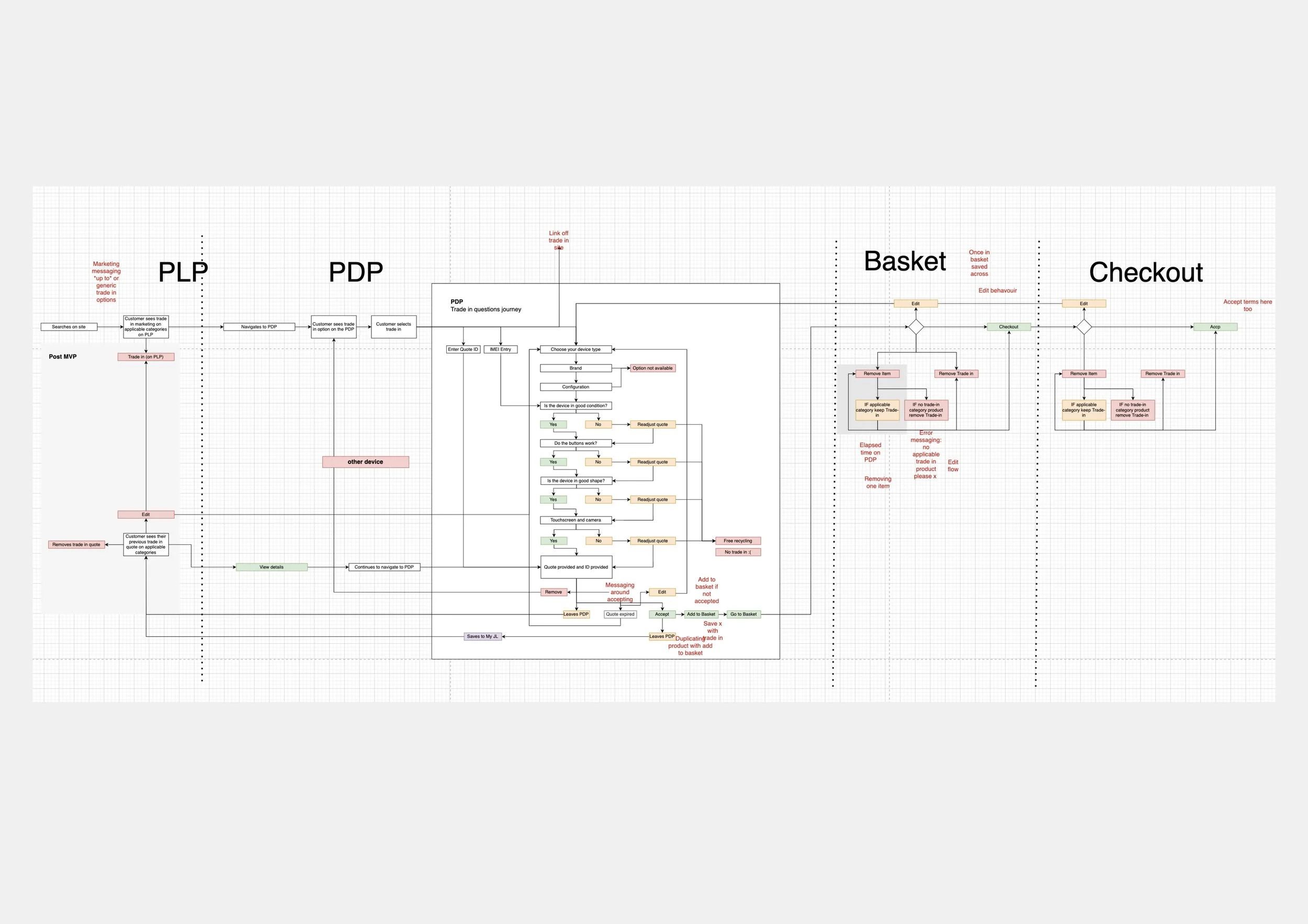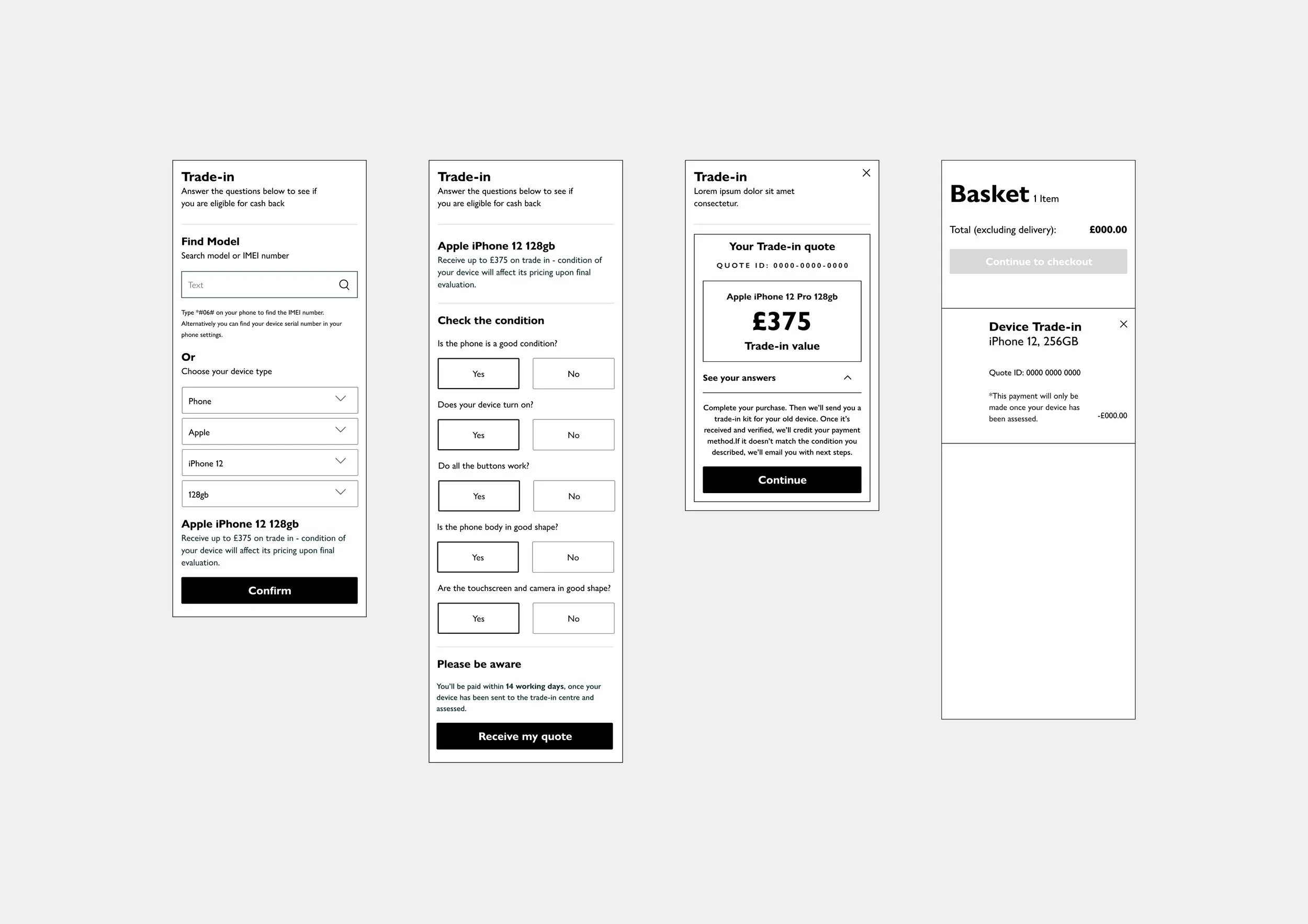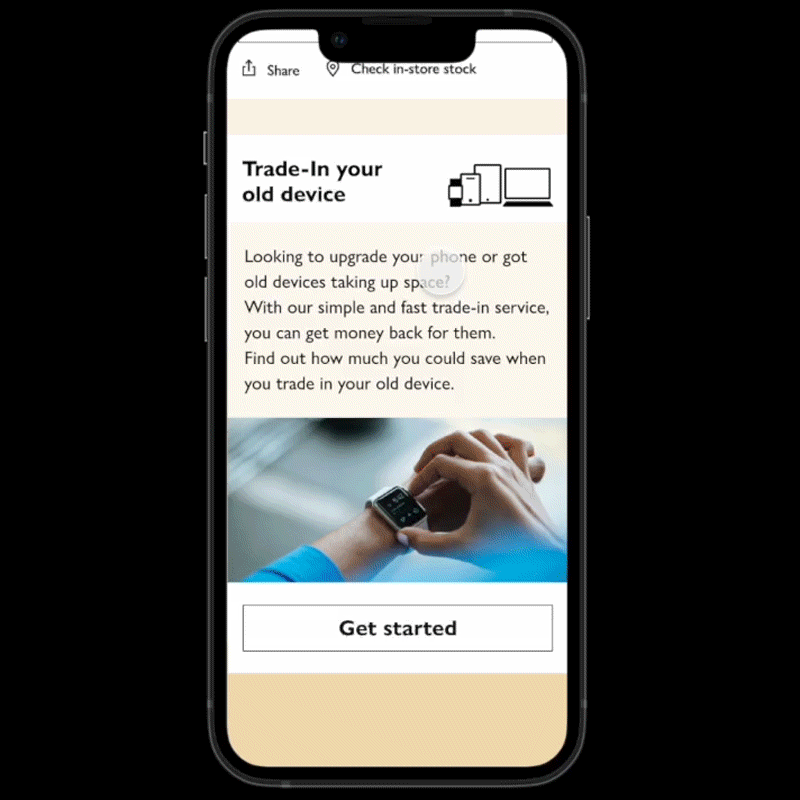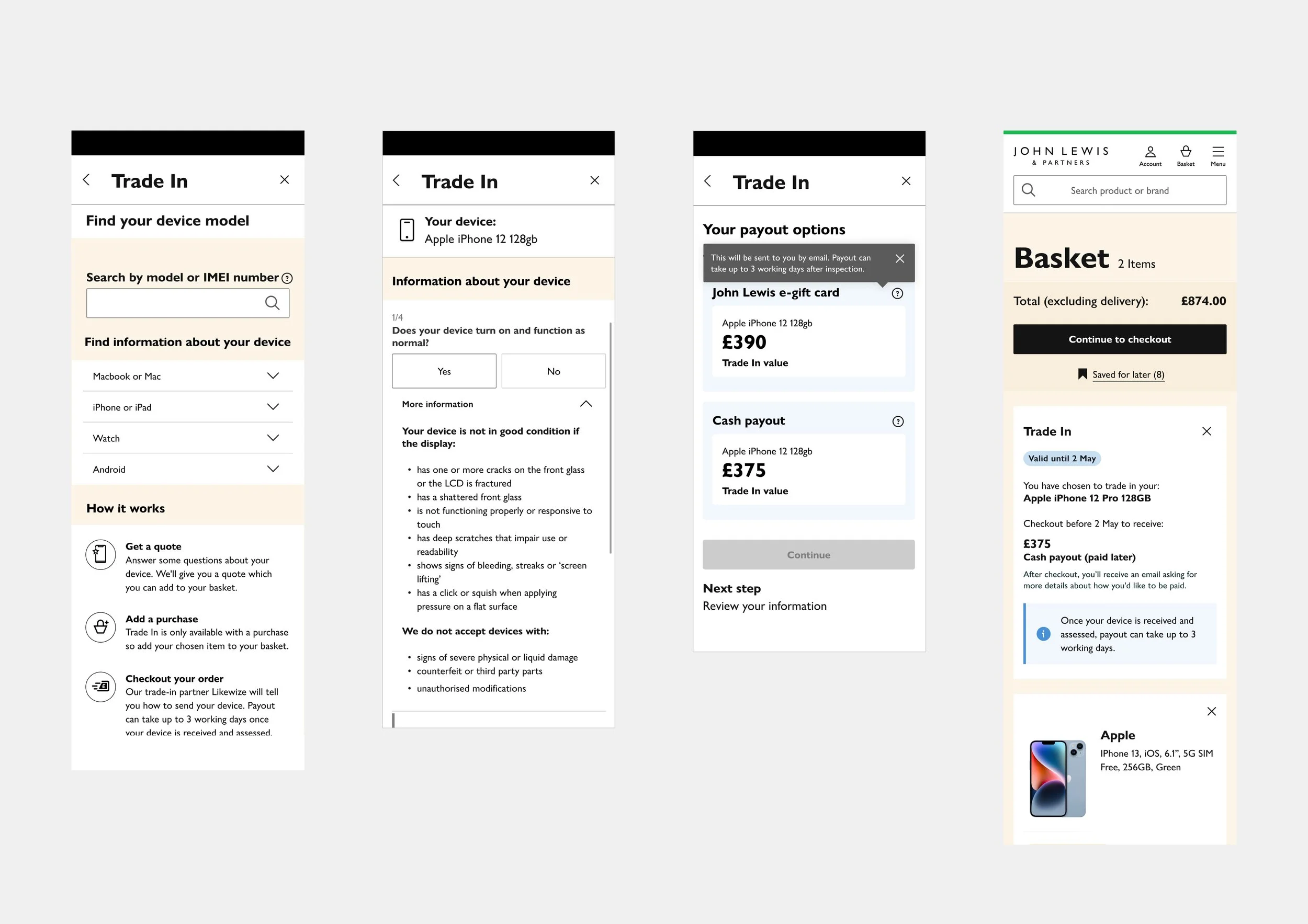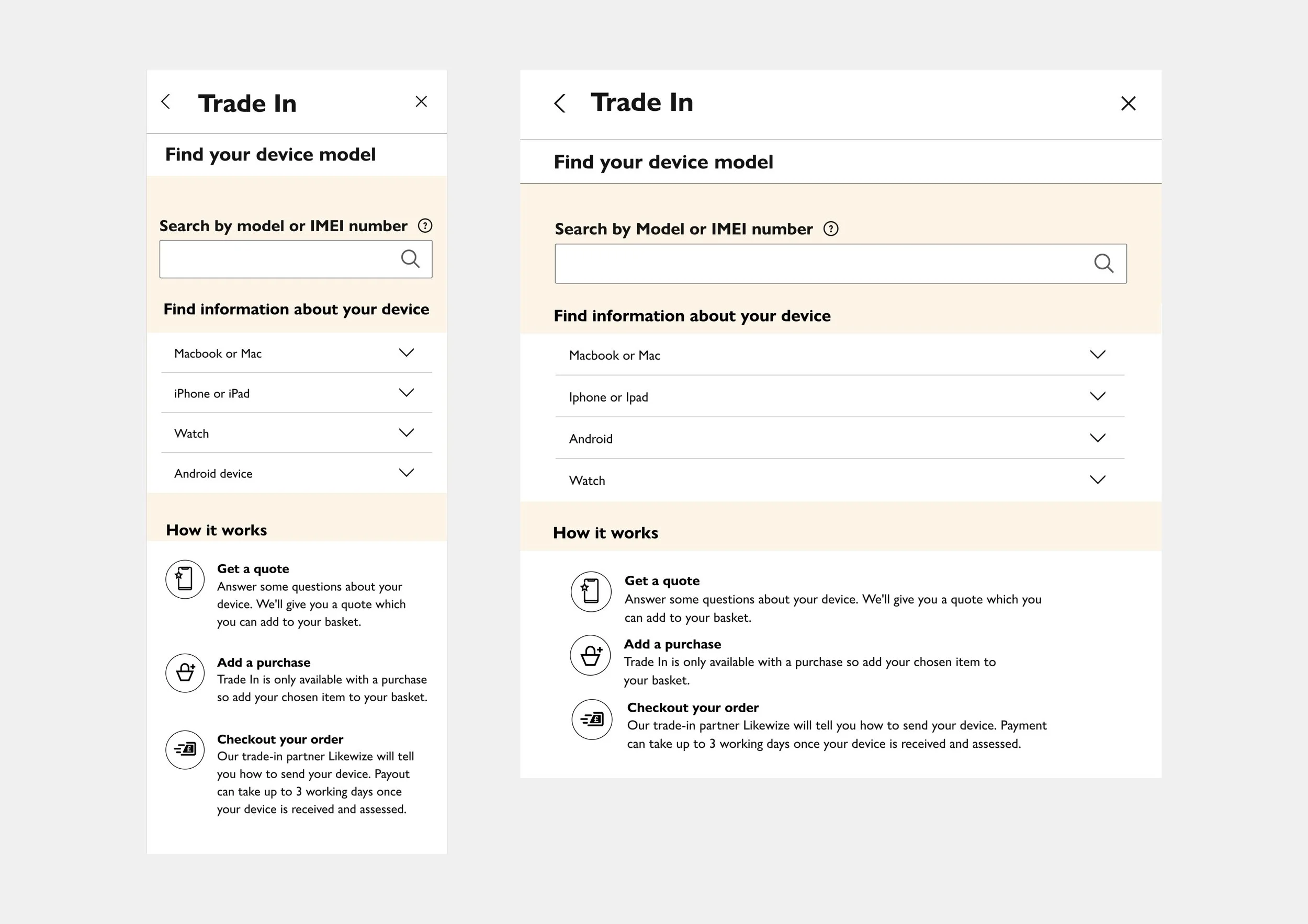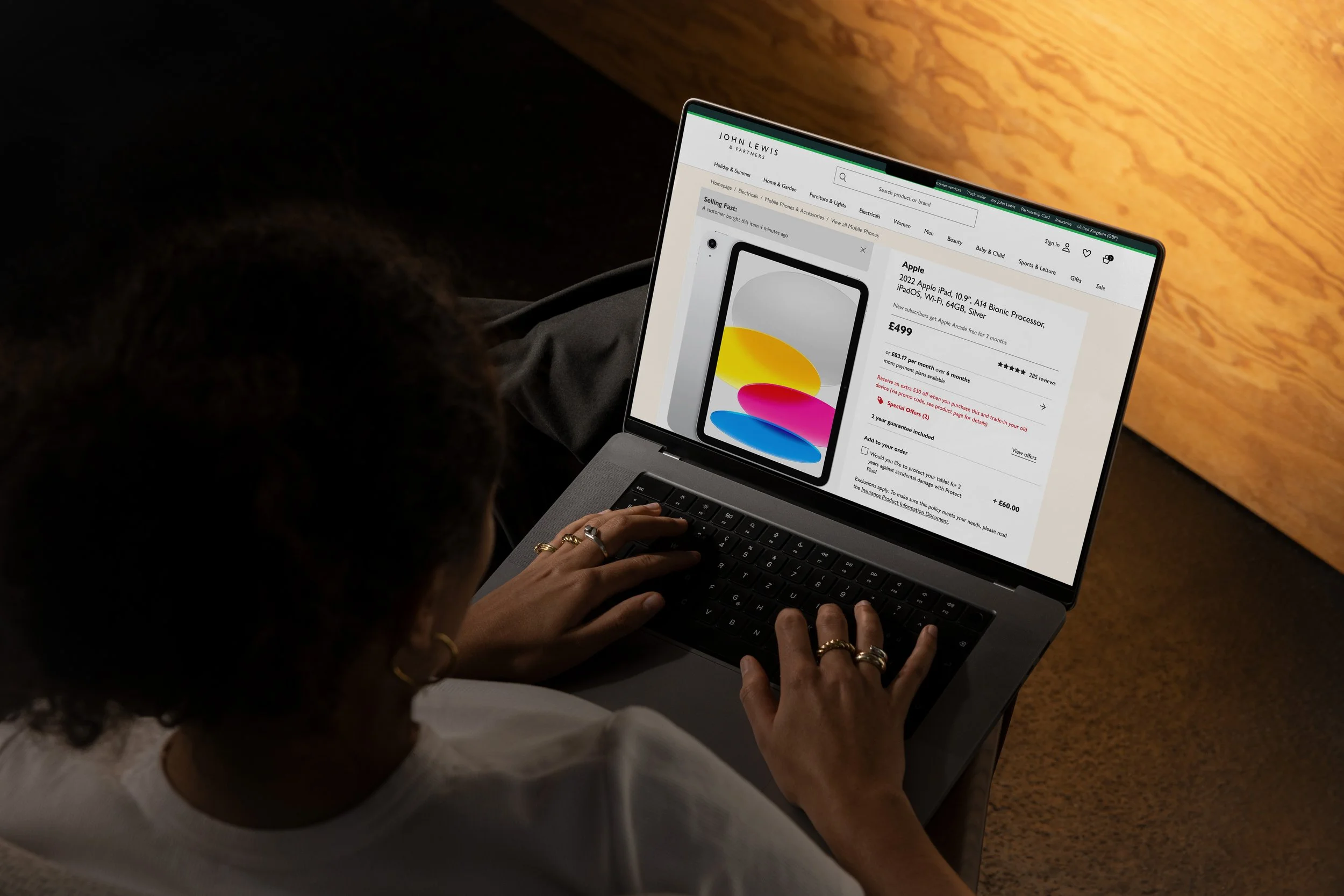
John Lewis
Developing a new Technology Trade-in service.
Brief
The existing trade-in service (operated by SquareOne) was complex, poorly integrated, and difficult to find in the buying process, this resulted in high abandonment rates and low customer satisfaction scores. I was tasked with leading the design development for an improved integrated trade-in proposition.
Task
Within six months to have designed, validated, and implemented a new online and in-store Trade-in customer experience; coinciding with the launch of the iPhone 15 in September 2023.
Hypothesis
By addressing the key pain points of the existing service we can provide incremental revenue gains, improved customer sentiment/perception and improved sustainability metrics.
Contribution
Senior Experience Designer; developing the service blueprint for the digital and in-person proposition, designing and testing wireframe flows, and finessing final designs.
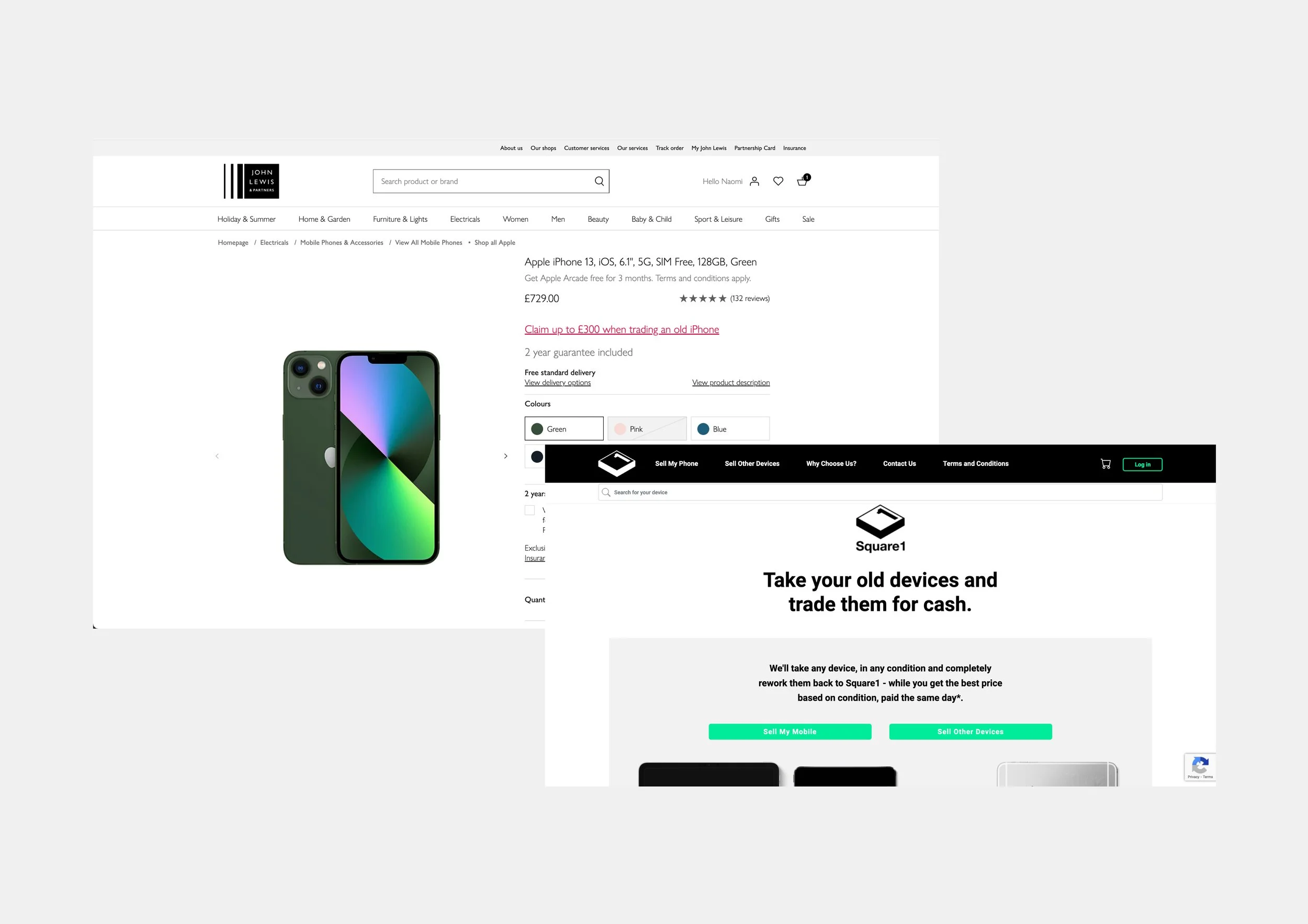
AS-IS
Through AS-IS experience mapping, customer benchmarking, and Adobe analysis the following pain points and for the existing service were identified:
Customer Pain Points
1. The service was hosted on an unbranded external webpage, in which 95% of customers bounced on arrival.
Requirement: The new proposition should be integrated.
2. 17% of all trade-in requests failed as customer devices were not graded as the condition they had described.
Requirement: Grading questions should be concise and provide accurate device values.
3. The customer journey was complicated, requiring tasks to be completed on two different websites for buying and selling.
Requirement: Incorporate Trade-in into the core buying journey.
4. The service was online-only, despite 40% of John Lewis trade coming from in-store sales.
Requirement: Support an in-store service.
5. We offered less value for graded devices compared to our competitors.
Requirement: Provide fair reward for customer devices.
6. It takes up to 14 days to receive payment after completing a trade-in.
Requirement: Payment times should be reduced, or instantly applied during the shopping journey.
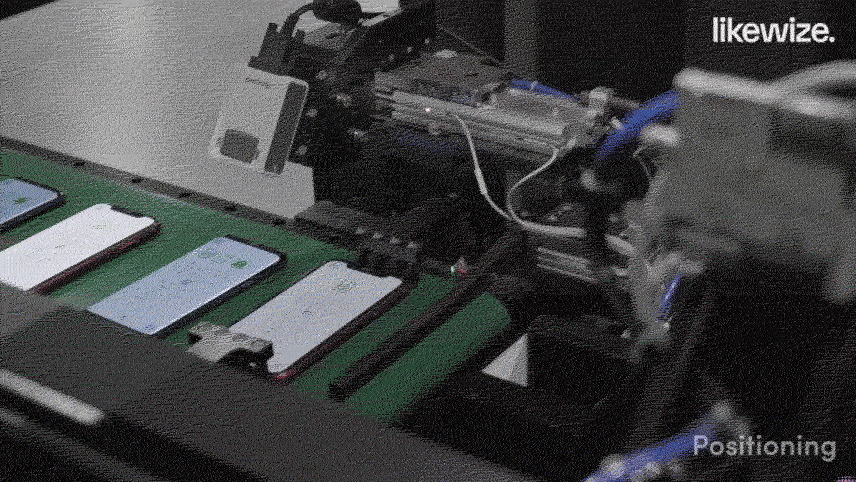
Vendor Selection
The Customer Pain Points informed the requirements for the new proposition, and in the evaluation of a 3rd party vendor. After interviewing nine candidates, our selection was Likewize. They were chosen for their robust API, which enables various functional capabilities for building an integrated trade-in solution (for example device serial number and IMEI searches). In addition they had high Net Promotor scores, honouring 98% of customer valuations and providing payment within 4 days of device grading (ten days faster than SquareOne our current provider). Other benefits included improved shipping options, such as the auto generation of prepaid labels and packaging, and the ability to facilitate an in-store service.
Likewize is also the only vendor to assess devices automatically, using robots!
TO-BE
I started the design development phase with a To-Be Service Blueprint mapping session. Over three days, I led a workshop to visualise the future digital journey, define the key stages of the customer experience, and hypothesise the ideal proposition. The session helped the team identify technical limitations, map the functions of Likewize’s API, and plan the next steps for each stakeholder.
To-Be Service Blueprint
Though based on initial assumptions, the service mapping helped us define the key elements needed to create a technically feasible MVP. It also provided a high-level overview that could be shared with broader stakeholders to explain how the new service would work.
MVP functional plan
Customer To-Be Journey
1. Find Device
The customer searches for their device model or serial number.
2. Grading
A series of questions are asked to assess the device's condition.
3. Valuation
Based on the information, a price is shown for the customer to accept.
4. Checkout
The customer completes the trade-in and order, filling out any required details.
Service Flow Diagram
I created this diagram to map out the different paths a customer could take when interacting with the service. It helped me design prototypes by showing all possible options at each stage. It also allowed the team to spot potential errors or complex scenarios.
Initial wireframes
An initial assumption I had was that the integrated proposition would be an in-page solution, however as I started to define the screens for each stage of the journey, it came apparent it would be best suited for a modal or overlay component.
Prototype fidelity
Testing
A remote unmoderated test was conducted with 12 participants to assess the performance of the integrated flow and identify any key usability issues that could be addressed in future design iterations.
Insights
1.Some participants assumed that the payout from a cash or gift card could be used against the cost of the new phone.
Recommendation: Provide better signposting and copy throughout the journey summarising the Trade-in process, and utilise language such as price after trade-in in basket.
2. Not all of the participants were fully aware of the next steps and the time taken for them to receive their trade-in payment.
Recommendation: Communicate at an earlier stage of the journey the steps required to complete Trade-in and that payment can take up to 14 days.
3. Gift-card was almost unanimously chosen as the preferred payment option.
Recommendation: Make up to pricing indicative of the gift card amount.
4. The device grading questions were understood, however some participants were hesitant to if the assessors would agree with their own assessment.
Recommendation: Potentially highlight percentage of quotes honoured on the summary of the service or information page.
5. At the basket stage, participants were unsure how to send their device to John Lewis, with some assuming they would need to go to a store or mail it. While information about this was provided earlier in the journey, participants focused mainly on the device details and didn't notice it.
Recommendation: Include more information about the device sending process up front.
Refinement
After testing, it became clear that signposting and clarity of the customer journey needed improvement. I addressed this by adding a “How it works” section on the "Find Your Device" page that explained the entire trade-in process and how to locate the device's IMEI. I also added tooltips and drop-downs throughout the flow, providing extra information at each stage. I also worked with a copywriter to help me finalise and refine the wording, which was then approved by the John Lewis brand group.
Refinement signposting
Where the additional text extended for longer than a sentence I used dropdown components, in addition Tooltips were used for small pieces of subtext.
Responsive designs
Release
The new Trade-in service launched in 2023, two weeks before the release of the iPhone 15 on the 22nd of September. The trend over the initial two weeks was that three times as many customers were completing trade-ins compared to the previous year, with 98% of all customer quotes being honoured, (an 15% increase). The average order value for customer devices was £108, and the typical time to payment was 4 days, a reduction of 10 days.
Daily Trade-in growth
Summary
After the launch of the new Trade-in proposition we continued to refine the customer journey, including redesigning the entry point, supporting trade-in offers, and launching an in-store proposition.


